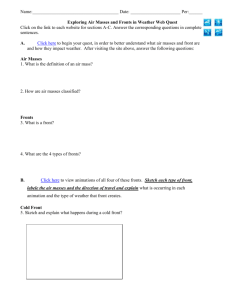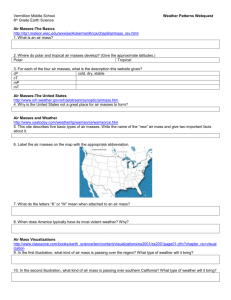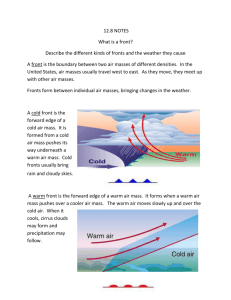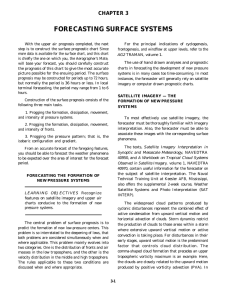Air Masses, Fronts, Norwegian Model
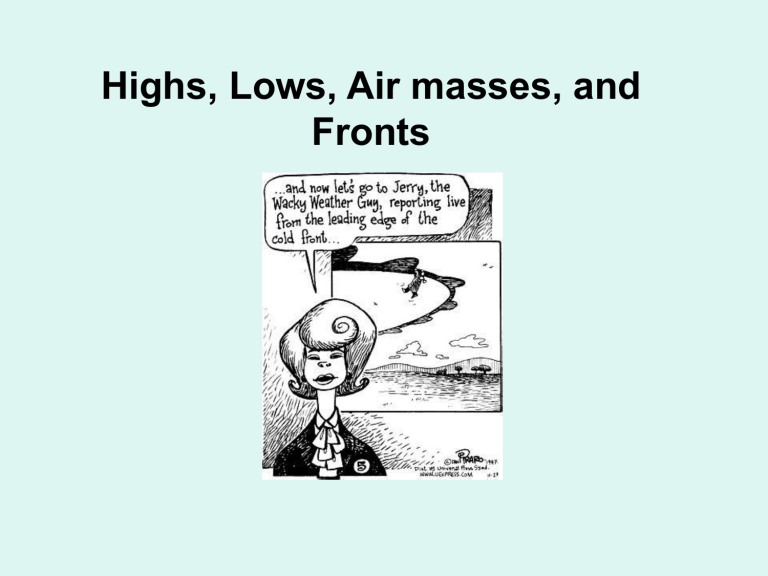
Highs, Lows, Air masses, and
Fronts
Friction causes the air to spiral inward toward lows while still spinning counter-clockwise. Air spirals out of Highs clockwise.
What kind of wind flow
?
We label all weather maps with the Greenwich Mean Time (GMT).
This is also called Zulu time, Z for short. Eastern Standard Time is 5 hours behind GMT.
This is the 00Z map. That’s midnight in Greenwich,
England. What time is it in Oneonta?
Isobars help to show the pressure gradient
Cold and dry air. Where did it come from?
Saturday afternoon at 21Z
(4 p.m., eastern time)
The five main air masses
Continental
Arctic cA
Polar Tropical cP cT
Maritime
(does not exist)
mP mT
The atmosphere has discrete areas of air with homogeneous characteristics. These are called air masses.
mP cA cA cP cP cT mT
All five main air masses are here. Can you find them?
There are places which are very cold, ones which are very warm, with large gradients in between the air masses.
The boundary between air masses is a front
Fronts in meteorology were based on the battle fronts of World War I
The frontal theory was proposed by
Vilhelm Bjerknes
To see this, go to www.richthofen.com/ww1sum/
French infantry
The German uniform of WWI
Trenches at the front
Fronts come in two basic types: Cold fronts and Warm fronts
In the cold front, the cold air mass is advancing
In the warm front, the warm air mass is advancing
Cold air is heavier and more dense than warm air so the cold air vigorously pushes the warm air up.
Warm air can’t push underneath the cold (denser) air, so it slides above.
The fronts intersect the
Cyclones which have centers of Low pressure.
Vilhelm
Bjerknes, who proposed the frontal model, extended it to extratropical cyclones.
This is a known as a mature cyclone. It has both cold and warm fronts which meet at the Low.
The evolution of a storm from birth to dissipation
You can use the Norwegian model to make forecasts
Remember, here’s the typical weather in relation to the fronts
This is an actual forecast, known as a surface “prog”
Using the
Norwegian model, what would be reasonable forecasts for each city?




